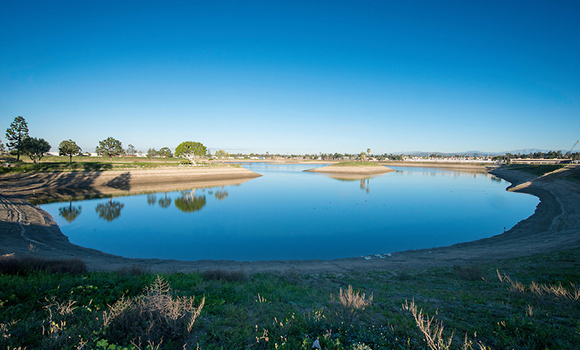
Groundwater recharge lake in Anaheim, California (Photo: CA DWR)
Since 2011, California has seen the whipsaw effects of drought and flood—from dam and levee failures and flooded neighborhoods to dry wells, parched fields, and trucked water programs to meet basic human needs. While experts predict that these fluctuations are the new norm, smart water leaders are considering new ways to slow down, capture, and store rainy day flows for the inevitable dry days that follow.
Last month, water and land use leaders met at the UC Agriculture and Natural Resources Center in Davis to discuss opportunities and challenges for protecting and increasing groundwater recharge.
Driven by the requirements of the 2014 Sustainable Groundwater Management Act (SGMA) many regions of the state must develop new plans to protect and improve groundwater basins. First in line are the most critically overdrafted basins. Recharging groundwater basins with flood flows and stormwater can both reduce flood risks and bring these basins back into balance. In many areas, groundwater recharge projects can also reconnect historic floodplains, providing valuable habitat benefits for fish and wildlife.
In Davis, water managers, land planners, academics, and non-profits spent the day identifying policy, research, and funding approaches to get more water in the ground. Key discussion topics included the following:
- Identifying and preserving sites for recharge and other benefits
- SGMA requirements and water budgets
- Water rights and water quality
- Regulatory process improvements
- Fiscal incentives
The hot topics in the discussion included the following:
- Statewide data compilation on land and site suitability for recharge
- State support for research, best practices, and creative funding approaches.
- Policy recommendations to coordinate groundwater recharge with water and land use policies and requirements.
- Funding and regulatory incentives for coordinating land, water, and flood management.
The ideas and recommendations will be compiled and developed for discussion and endorsement at the One Million Acre-feet Challenge working session at the 2018 California Economic Summit in Santa Rosa on November 15.
Join us for the discussion. Learn how you can make a difference in your region. Register today.

